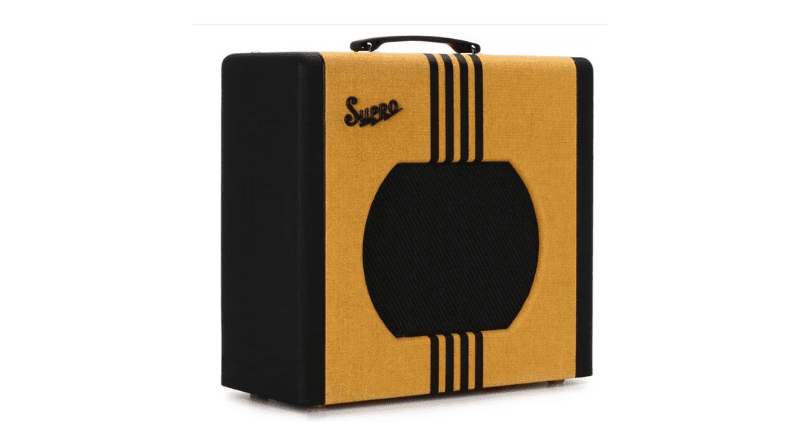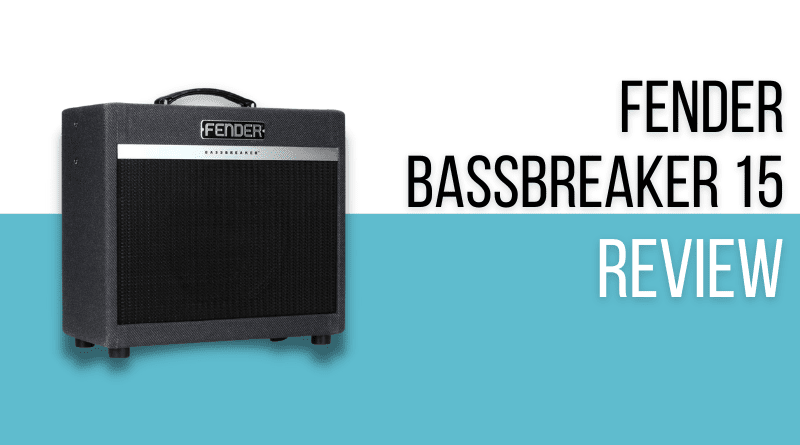Fender has one of the most storied histories in music, and yet the brand didn’t even start until the birth of the electric guitar. Leo Fender was an electrical engineer by trade, and one of his earliest creations just so happened to be an amplifier.
In this KillerGuitarRigs Review, we’ll be getting a good look at one of Fender’s most contemporary amplifier releases, the Fender Bassbreaker 15. This amp has been around since 2016, and offers all-tube tones at a relatively affordable price point.
From what we heard prior to testing, this amp was a lot punchier, and dare we say, more ‘Marshall’ than a typical Fender, and this left us pretty excited to plug in and find out for ourselves – keep reading to see what we learned!
Read more about our review process.
Contents
Who Is This For?
The Fender Bassbreaker 15 is a good choice for players at all stages of their journey, whether you’re a beginner without too much budgetary concern, or a working musician looking for a solid studio amp, or a rig for small gigs, the Bassbreaker 15 has you covered.
Beginners should note, that despite this being a 15 watt combo it’s all tube, so if it’s being compared against other amp options, it has the equivalent output of around a 30-50 watt solid state amp.
Appearance / Features / Controls
Immediately after unboxing the Bassbreaker, we were floored with how good it looked. The most striking feature was the grey tweed covering, which was beautifully applied, and just so very different to look at, making this a real head turner.
We received the combo model to try, but the Bassbreaker 15 is also available as an amp head if you prefer to mix it up with different cabinets.
The logo pays homage to one of Fender’s early block design logos, and has a real ‘50s space age feel to it – it suited the aesthetic of the amp perfectly. It was fitted with a nice, thick black grille cloth, and a comfortable leather handle, which was definitely welcome – this amp weighs around 40lb, so having a good handle like this makes like a big difference.
The cabinet itself is made from birch ply, which is a real plus point. It was rock solid, and resonated well.
As with many vintage design Fender amps, the control panel was on the top, and for a small combo, there were a lot of control options for tone. There’s a single input, and next to that you have your gain control. One of the coolest features was the structure switch, which had three positions, each resulting in a completely different gain voicing. Low is for clean tones, Med is for crunch, and High is for high gain.
It has a 3 band EQ control, including bass, middle and treble, which was nice to see as small tube amps are often missing mid controls. Of course, there’s a master volume control, which allowed us to cut the volume and still keep the high gain tones at lower volumes.
For sound texture, it was equipped with a digital reverb control, too. It’s obviously not as organic sounding as a genuine Fender spring reverb, but it still sounded great in our opinion.
One of the nicest features is something those who record will definitely appreciate – a power amp mute switch. This allowed us to kill the volume so that we could line in to an interface in silence, without losing our preamp gain – one of the many reasons this amp is a real studio weapon.
The combo version gets a 12” Celestion G12V-70, which is from their renowned V-Type range. It really added a lot of punch to the overall tone, and was super responsive to changes in attack.
Performance/Sound
After getting plugged in we started at conservative volumes, understanding that this was likely going to be relatively speaking, very loud. At low volumes, this amp was really sweet sounding, especially on the low structure switch setting.
We found that there definitely wasn’t as much headroom as something like a Fender Pro Jr, or even a Blues Jr, with breakup starting to happen at around 60% volume. When the breakup started it was fantastically organic, and in the low structure mode, it was really subtle, and very “classic Fender”. Up at high volume it gave us chime mixed with a little dirt, an ideal tone for early rock and roll.
Where things got really interesting was when we switched over to the medium setting on the structure dial. We very quickly went from clean, to a thick, fat crunch, which was really reminiscent of a classic ‘60s Marshall.
One of the biggest surprises was the fact that we were able to get some true metal tones out of this amp without the need for pedals. Traditionally the words Fender amp and metal would never belong in the same sentence, but here they meet in pretty glorious fashion. With the structure control set to high and gain maxed out, this amp can really chug.
The bright switch was also useful in every setting. It quickly added some top end to the tone that brought some extra “America” to the sound without having to adjust the EQ. This was really helpful when playing in a band setting, giving us a bit of extra edge to cut through a mix. With volume at around 80% or higher, it was also more than enough to keep up with an unmic’d drum kit.
After assessing this amp in each of the voicings, it has quickly become a KGR staff favorite. It’s such a versatile combo that does so much, and everything it does, it does brilliantly.
Other Amps to Consider
While we really loved the Bassbreaker 15, it isn’t necessarily going to be to everybody’s taste. If you’re still looking for a low powered tube combo, there are still a multitude of alternative options – take a look at a couple of our favorites below
Supro Delta King

This is another unique looking amp that oozes retro cool. Like the Fender, the Supro Delta King is a 15 watt all tube amp, but it’s less of an all rounder, and much more focused on the crunch and drive. To get the breakup that this amp does so well, it has a built in Pigtronix FAT High Gain function, which instigates huge amounts of breakup at really low volumes, making this a great choice for at home practice and studio use (full review here).
Fender Pro Junior IV

The Fender Pro Junior IV is one of the finest small, clean combo amps on the market. It doesn’t have quite the same level of tonal control as the Bassbreaker, but this is a big part of its charm. It stays crystal clear right up the volume range, requiring more than 70% volume before it even starts to break up. If you’re a pedal user and you need masses of headroom, you’ll love the Pro IV Junior.
Final Thoughts on the Fender Bassbreaker 15:
It’s little wonder that the Fender Bassbreaker 15 gets as much love as it does in online circles. It’s rare to find such incredible versatility in a small combo – often amps that can do clean, crunch and distortion, usually only do one of those things well, and we found that the Bassbreaker managed all three brilliantly. Yes, it’s a little heavy, but that’s a small price to pay considering you’re getting a gig ready Fender tube amp for around $700. In our minds, this amp is a must buy.
Check out these other articles you might like:


